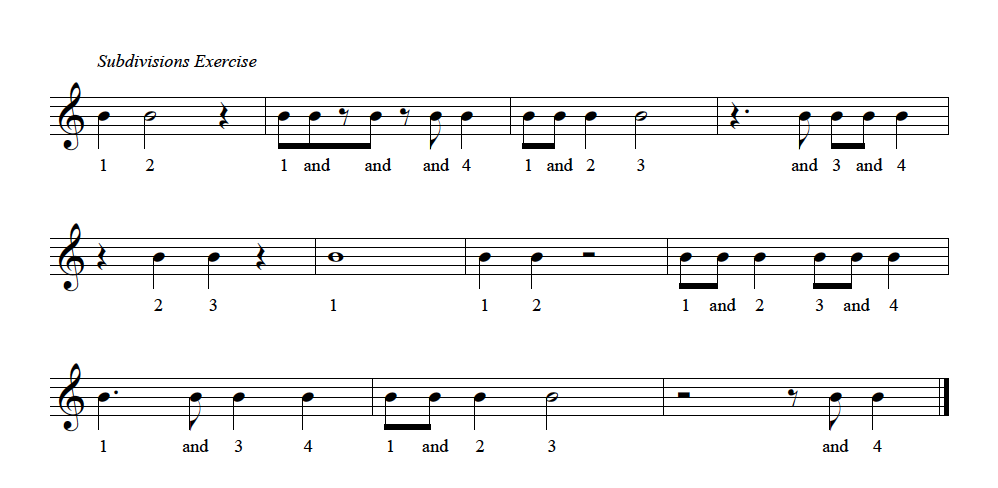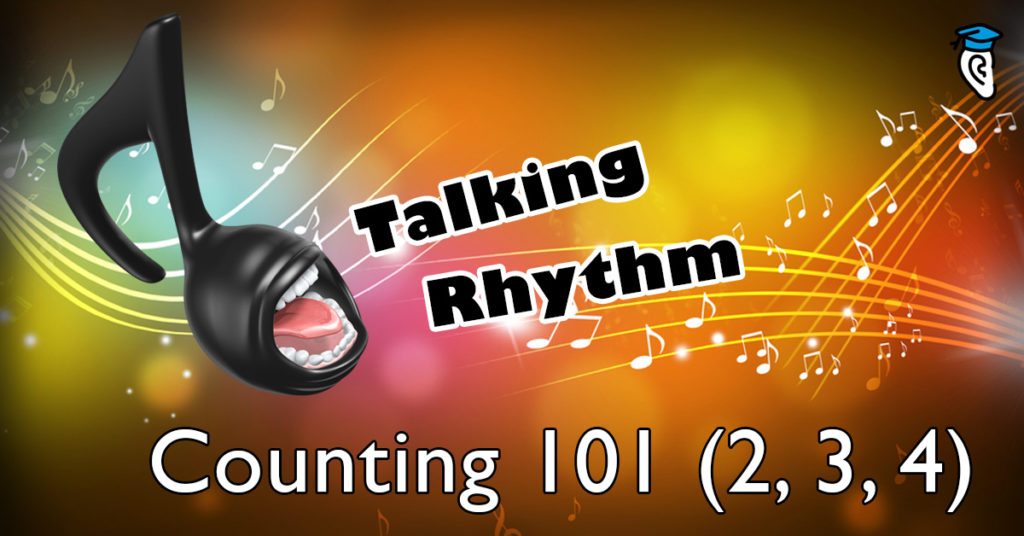Have you ever wondered how to play a rhythm from score notation, or write down a rhythm you’ve heard? In this Talking Rhythm series you will learn two easy and effective ways to “talk” out rhythm patterns from notation. In this article we’ll introduce the first one: “count chant”.
This method will be familiar to anyone that has played in a school band or chorus, or a community choir. In fact, even at the university level, many musicians still use this simple method for counting out rhythms. The benefits of using this simple method is that it can be adapted to much more complex time signatures and rhythms easily.
Back to Basics
Before you can start counting out a rhythm, you need to remember some basic music theory. If you need to develop more in-depth music theory skills, check out this tutorial from Dave Conservatoire.
Below is a basic rhythm chart to help you as you learn how to count:

As you can see, one quarter note equals one beat and there are four in a 4-beat bar. In the count chant method each beat is given a number. Right now we will be dealing with simple time signatures like 4/4. In the next article you will learn about more complex counting methods for compound meters.
For these exercises you will need a metronome to click the beat and one beat equals one quarter note. At first you will only try to say the words along with the recorded example. Practice counting with the audio example first, then try to count out the examples without the recorded example.
When you find that you can do this easily, then try to tap your foot on the beat with the metronome while you count out loud. This may involve some coordination, but over time, being able to internalize the pulse allows you to become your own metronome. Tapping your foot while you count is just one way to work on your tempo and rhythm.



Exercise 1: Count the Rhythm
Here is a simple exercise for you to try:
- Count the Examples below with the audio
- Set your metronome to 80
- Count the rhythm without playing the audio clip
- Once you can do that, try to tap the beat with your foot and count the rhythm at the same time
To count the 8th notes, you simply say “and” for each 8th note. Remember that there are two 8th notes for every beat. Try the two examples below.


What About Rests?
There are two basic ways to handle rests and long notes in the count chant method. The first method involves simply counting the rest or long note in your head silently.

Another method to deal with rests involves saying “REST” out loud for the passing time. Each “REST” equals one beat. Hear the example below.

Counting longer notes like half notes is usually done silently in your head. However, some musicians may find it helpful to hold out the counts instead.

For the exercises below, we will count in our head silently and not out loud for rests and long notes. If you find that it is easier to say “REST” or hold out long notes, then practice doing it that way. In general, most musicians that use this method do not count rests and long notes out loud.
Exercise 2: Count the Rests
In the examples below, practice counting the silent note values in your head.
- Count out loud with the recording
- Set your metronome to 80
- Practice counting without the recording
- If you can, tap your foot and count

Exercise 3: Subdivisions
You have already practiced some simple exercises with half notes, quarter notes, 8th notes, and rests. Try the example below using 8th notes.
- Count out loud with the audio recording
- Set your metronome to 80
- Practice counting without the recording
- Practice the exercise again while tapping your foot

Rhythm Recap
In this article you learned how to count basic rhythms using the count chant method. Practice these basic rhythms throughout your day. You can practice them on the go by downloading the audio files and listening to them on your iPhone or other mobile device. In the next article we will start practicing more complex counting methods for compound meters, 16th notes, and syncopated rhythms!
Have any questions about count chant? Are there any special rhythms that you would like to be able to count? Leave a comment and let us know!








